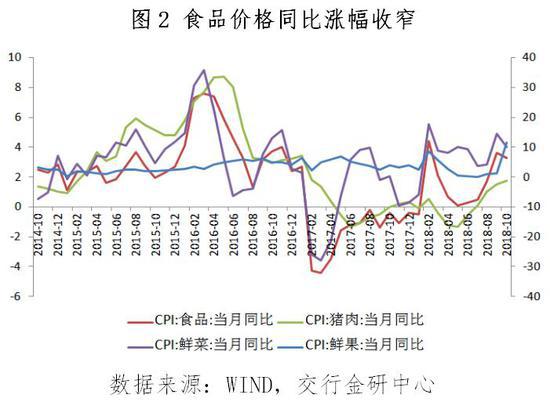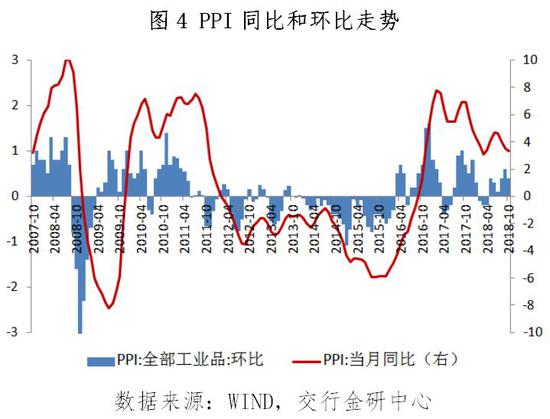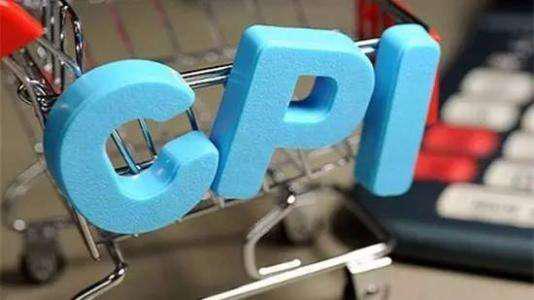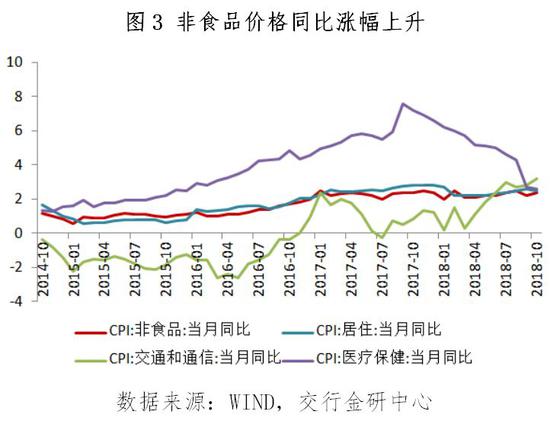Article/Lian Ping, columnist of Sina Financial Opinion Leader (WeChat official account kopleader)
From the perspective of CPI and PPI, current prices have kept a moderate rise, creating a better price environment for macro-control policies.
Summary of views
CPI in October rose 2.5% year on year, the same as that of last month; PPI rose 3.3% year on year, 0.3 percentage points lower than that of last month. From the perspective of CPI and PPI, current prices have kept a moderate rise, creating a better price environment for macro-control policies.
Food prices and non food prices fell and rose, promoting CPI to remain stable as a whole, and the year-on-year increase was the same as that of last month. The month on month ratio of food prices was - 0.3%. After entering the autumn, agricultural products were concentrated on the market, which promoted the decline of food prices. Non food prices rose 0.3% month on month. Affected by the earlier rise in international oil prices and the rise in domestic product prices, gasoline, diesel, liquefied petroleum gas and other prices rose significantly. From a year-on-year perspective, food prices rose by 3.3% year on year, narrowing by 0.3 percentage points, of which the prices of fresh fruits, vegetables and eggs rose significantly year on year. Non food prices rose 2.4% year on year, an increase of 0.2 percentage points. The core CPI excluding food and energy rose 1.8%, a moderate increase.
The month on month increase of PPI fell back, the tail raising factor weakened, and the year-on-year increase continued to narrow. PPI rose 0.4% month on month, 0.2 percentage points lower than that of the previous month. The main industries where the price rise fell back include oil, coal and fuel processing industries. From a year-on-year perspective, the year-on-year growth of PPI has gradually dropped since the third quarter, showing a monthly downward trend. The purchase price of industrial producers rose by 4% year on year, although the increase has fallen back, it is still significantly higher than the factory price, which indicates that the cost pressure of industrial enterprises is large and will affect the profitability of enterprises.
After October, the price of crude oil fell back from a high level, with a correction rate of more than 15%, which will reduce the upward pressure on non food prices and also have a downward impact on the year-on-year growth of PPI. In the context of stable and slowing domestic and international demand, and the price of upstream production products has fallen, the overall price is lack of upward momentum. The prudent monetary policy will not release a large amount of liquidity, and will not have the effect of raising prices. The slowdown of M1 and M2 growth in the early period may affect the decline of CPI. The tail raising factor of PPI is significantly lower, while the new price rising factor is weak, and the year-on-year increase will still narrow. The focus of the weak link policy lies in infrastructure investment, which may bring about a phased rise in related industrial products.
text
In October, CPI rose 2.5% year on year, which was the same as that of the previous month. The tail lifting factor affected 0.3 percentage points, and the new price increase affected 2.2 percentage points. PPI increased by 3.3% year on year, 0.3 percentage points lower than that of the previous month, including 1.2 percentage points affected by tail lifting factors and 2.1 percentage points affected by new price increases. From the perspective of CPI and PPI, current prices have kept a moderate rise, creating a better price environment for macro-control policies.
1、 The year-on-year increase of CPI was the same as that of last month
In October 2018, CPI rose 2.5% year on year, the same as that of last month. CPI rose 0.2% month on month, 0.5 percentage point lower than that of last month. The core CPI excluding food and energy rose by 1.8%, a slight increase of 0.1 percentage point over the previous month.

Food prices and non food prices fell and rose, promoting CPI to remain stable as a whole. The month on month ratio of food prices was - 0.3%. After entering the autumn, agricultural products were concentrated on the market, which promoted the decline of food prices. The prices of fresh vegetables and eggs declined month on month, respectively - 3.5% and 4%. Pork prices and fresh fruit prices rose month on month, up 1% and 1.9% respectively. Non food prices rose 0.3% month on month. Affected by the earlier rise in international oil prices and the rise in domestic product prices, gasoline, diesel, liquefied petroleum gas and other prices rose significantly, up 4.2%, 4.7% and 1.8% respectively. Tourism and air ticket prices declined month on month.

From a year-on-year perspective, the year-on-year growth of food prices narrowed, while the year-on-year growth of non food prices expanded, promoting the year-on-year growth of CPI to be the same as last month. Food prices rose 3.3% year on year, down 0.3 percentage points. The prices of fresh fruits, vegetables and eggs increased significantly year on year, 11.5%, 10.1% and 7.8% respectively. Non food prices rose 2.4% year on year, an increase of 0.2 percentage points. The prices of gasoline and diesel increased by 22.5% and 25%, respectively, a large increase. The prices of housing, education services and medical care rose by 2.5%, 3.2% and 2.6% respectively. The core CPI excluding food and energy rose 1.8%, a slight increase of 0.1 percentage points over the previous month, showing a moderate trend.
2、 PPI year-on-year growth narrowed for four consecutive months
In October 2018, PPI increased by 3.3% year on year, 0.3 percentage point lower than that of the previous month, and the increase narrowed for four consecutive months. PPI rose 0.4% month on month, 0.2 percentage points lower than last month. The industrial producer purchase price index (PPIRM) rose 4% year on year, 0.2 percentage points lower than that of last month. PPIRM rose 0.7% month on month, 0.1 percentage point higher.

The month on month increase of PPI fell back, the tail raising factor weakened, and the year-on-year increase continued to narrow. PPI rose 0.4% month on month, 0.2 percentage points lower than that of last month. The main industries that saw the month on month increase of prices fall back are oil, coal and fuel processing industries. The growth of oil, natural gas and coal mining industries as well as non-ferrous metal smelting and rolling processing industries expanded. The growth of chemical fiber manufacturing industry turned down. From a year-on-year perspective, the year-on-year growth of PPI has gradually dropped since the third quarter, showing a monthly downward trend. Chemical raw material and chemical products manufacturing industry, non-metallic mineral products industry, ferrous metal smelting and rolling processing industry, and fuel processing industry saw obvious price increase and decrease this month. It should be noted that the purchase price of industrial producers rose by 4% year on year, although the increase has fallen back, it is still significantly higher than the factory price, and the month on month increase of PPIRM has expanded for four consecutive months, which is 0.7% this month, indicating that the cost pressure of industrial enterprises is large, which will affect the profitability of enterprises.
3、 Inadequate impetus for overall price rise, CPI and PPI growth may narrow
After October, the price of crude oil fell back from a high level, with a correction rate of more than 15%, which will reduce the upward pressure on non food prices and also have a downward impact on the year-on-year growth of PPI. The situation in the Middle East, especially the Iranian nuclear issue, will lead to fluctuations in international oil prices and uncertainties. Under the background of stable and slowing domestic and international demand, the price of upstream production products has fallen back, and the crude oil price will not continue to rise significantly, the overall price is lack of upward momentum. The prudent monetary policy will not release a large amount of liquidity and will not raise prices.
CPI is lack of upward momentum, and year-on-year growth may narrow. The slowdown in the growth rate of M1 and M2 may affect the decline in CPI. Pork prices may stabilize and rise in the future, but the range of rise is limited. It is difficult to change the running trend of the whole pig cycle and will not significantly raise prices. The tail raising factor of PPI is significantly lower, while the new price rising factor is weak, and the year-on-year increase will still narrow. The focus of the weak link policy lies in infrastructure investment, which may bring about a phased rise in related industrial products.
(The author of this article introduces: Chief Economist of Bank of Communications, member and director of China Finance 40 People Forum.)





